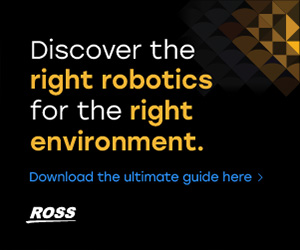Industry Insights: Navigating the advantages and challenges of PTZ cameras

Subscribe to NCS for the latest news, project case studies and product announcements in broadcast technology, creative design and engineering delivered to your inbox.
In this second installment of our Industry Insights series on broadcast cameras, we zoom in on the rapidly evolving world of PTZ (Pan-Tilt-Zoom) cameras.
Industry experts discuss how these versatile cameras are perfect for live events and studio productions. From remote control capabilities and AI-driven auto-tracking to integration with virtual production workflows, our roundtable participants explore the advantages, challenges and future trends of PTZ technology.
This roundtable complements our previous discussion on traditional broadcast studio cameras, offering a complete picture of the current camera landscape.
Key takeaways from the Industry Insights roundtable
- PTZ cameras offer enhanced flexibility by allowing broadcasters to capture shots in difficult-to-reach locations, expanding the range of live event coverage.
- Remote control capabilities enable operators to manage PTZ cameras from anywhere, increasing production flexibility and reducing the need for on-site personnel.
- Innovations like AI-driven auto-tracking allow PTZ cameras to maintain focus on subjects autonomously, adding efficiency to live broadcasts.
- PTZ cameras are cost-effective, providing high-quality imaging and scalability, making them a valuable investment for smaller broadcasters with limited budgets.
- Integration with protocols like NDI and SRT makes PTZ cameras versatile in both local and remote production environments, supporting seamless and reliable broadcasting workflows.
How are PTZ cameras changing the way broadcasters capture live events and studio productions?
Rich Eilers, national account sales director, Canon USA: PTZ cameras have provided broadcasters with the flexibility to get a shot in areas that were once deemed unattainable due to challenges of getting the camera operator to the location safely. Shots in a live environment, such as in tunnels at stadiums for player walk outs and top of the stadium shots, or for traffic and weather shots for newscasts, PTZs provide the ability to get cameras in position to provide these additional sources to help with the storytelling efforts.
Ivy Lee, marketing manager, Telycam: PTZ cameras can be controlled remotely, allowing operators to pan, tilt, and zoom the camera as needed from a central control room or even from the cloud and to put cameras in positions where a manual operator isn’t possible. What’s more, PTZ cameras offer dynamic shot capabilities that enable operators to create cinematic effects and capture key moments with precision.
What are the key advantages of using PTZ cameras compared to traditional camera setups in broadcasting?
Edgar Shane, general manager of engineering and product development, JVC Professional Video: Using PTZ cameras in place of a traditional broadcast camera setup provides production teams with more creative opportunities and the ability to capture additional angles, especially in non-traditional venues. PTZs also make it possible for cameras to be setup in locations that might be difficult for a camera operator to capture from, whether due to safety issues or not wanting to interfere with an event or ceremony. Examples include everything from Formula 1 racing and Olympic sporting events to weddings and baptisms at houses of worship.
How do the remote control capabilities of PTZ cameras change production flexibility and creativity?
Edgar Shane: The remote operation capabilities of PTZs increase production flexibility because operators can control the cameras from anywhere in the world. This means broadcast facilities can hire team members without incurring added travel expenses to send the operators on-site.
What are some of the most innovative applications of PTZ cameras in broadcasting today?
Rich Eilers: Canon has seen universities take advantage of the PTZ platform to cover their smaller revenue generating sports entirely remote from a control room with the use of 4-6 cameras that are installed for the season at each sports location. One operator can cut the entire show from the control room. It allows the university to put together an effective show without having to deploy additional technical and human resources to the effort.
Ivy Lee: With more PTZ camera vendors such as Telycam integrating support for the FreeD protocol into their products, PTZ cameras are playing a growing role in AR/VR production by providing dynamic, high-quality video feeds. By sending precise positional data to VR software in real time, FreeD integration ensures virtual objects seamlessly blend into real-world scenes to provide immersive experiences in news broadcasts, sports coverage, and entertainment shows.
How are broadcasters leveraging the advanced features of PTZ cameras, such as auto-tracking and facial recognition?
Rich Eilers: Both technologies are native to Canon PTZs, and broadcasters are starting to realize the capabilities that these features can add to the production. Having the intelligence in the camera to maintain focus on a particular subject and track it accurately allows the broadcasters to add more sources to the production as the camera is assisting in functions that the operator would usually need to oversee directly.
Ivy Lee: Auto-tracking is an important step in leveraging the integration of AI into PTZ cameras, allowing broadcasters to capture dynamic shots from unique angles without the need for manual operation. This is particularly useful for live events and sports coverage, ensuring that the subject remains in focus and centered in the frame.
What are the technical considerations when integrating PTZ cameras into existing broadcast workflows?
Rich Eilers: The ability to be able to color correct the PTZs to match the look of the other cameras in your infrastructure is critical to a uniformed-looking production. Ensuring that the PTZs have the capabilities to do so prior to purchasing is a smart move.
Edgar Shane: When integrating PTZ cameras into existing broadcast workflows, it is important to consider connectivity, remote control and that the image characteristics match the other cameras on location. Additional specifications to take into consideration are what protocols are being used and does the PTZ camera offer various options for added flexibility, such as traditional SDI, fiber or video-over-IP, NDI and SRT protocols.
What are the potential limitations or challenges of relying heavily on PTZ cameras in live broadcast situations?
Rich Eilers: While PTZ cameras offer considerable zoom ranges on their lenses, sometimes there won’t be enough tele or wide capabilities to frame the shot properly. Larger PTZ housings with full size broadcast cameras and lenses can address this, but at additional cost.
What are the most significant advancements in PTZ camera technology in recent years?
Edgar Shane: In recent years, JVC has made some considerable developments to its PTZ camera technology, such as image quality approaching that of traditional studio cameras, powerful zoom lenses (up to 40x) and the addition of AI-based smart auto-tracking.
Ivy Lee: PTZ cameras have advanced significantly in visual quality by combining 4K resolution with more advanced hardware components including ISPs with higher processing capabilities and larger sensors, such as the 1-inch sensor in our new Explore model. Many PTZ cameras also now come with built-in auto-tracking powered by AI algorithms. This feature enables the camera to automatically follow and track a moving subject within its field of view, allowing broadcasters to focus on more creative scenes during the event.
How can smaller broadcasters with limited budgets benefit from incorporating PTZ cameras into their productions?
Rich Eilers: PTZs have really stepped up their game in the past few years, providing high performance imaging with quite capable optics packages to be able to stand in for many traditional and non-traditional broadcast shots. Smaller broadcasters with limited production personnel can take advantage of having these better capabilities built into these cameras to have a high-end multi-camera show put together with a smaller production team.
What are the best practices for ensuring optimal image quality and color consistency when using PTZ cameras?
Edgar Shane: Selecting cameras from a reputable, long-standing manufacturer that offers a variety of products for ENG, studio and remote applications is a good way to ensure you will have optimal image quality and color consistency in your productions. Additionally, some vendors offer product demonstrations, which allow users to see the quality of the equipment before making an investment, as well as field support to ensure the products fit into specific applications.
How do PTZ cameras compare to traditional camera setups in terms of cost-effectiveness and long-term value?
Ivy Lee: PTZ cameras are generally more affordable than traditional broadcast cameras, especially when considering the cost of multiple cameras combined with the expense of the tripods and other support accessories needed for a traditional setup. As production needs grow, additional PTZ cameras can be easily integrated into the setup. This scalability ensures that the system can adapt to evolving requirements over time.
What codecs and formats are driving the conversation today? SRT? NDI?
Edgar Shane: When it comes to video production, today’s leading topics are focused on Network Device Interface (NDI) for local production and Secure Reliable Transport (SRT), which have become de-facto standards for studio and remote (REMI) production over IP/internet. The solutions provide low cost of implementation and broadcast-caliber image quality, which are becoming increasingly important considerations in today’s production environment.
Ivy Lee: NDI is a significant driver of the conversation due to its interoperability, scalability and ease of use. NDI allows for seamless integration of video sources, devices, and software applications within a production environment with straightforward setup and configuration. Meanwhile, SRT is important for remote production workflows because of its ability to securely and reliably deliver high-quality video with low latency even over the unpredictable public internet.
Subscribe to NCS for the latest news, project case studies and product announcements in broadcast technology, creative design and engineering delivered to your inbox.





tags
Canon, Edgar Shane, Ivy Lee, JVC, Rich Eilers, Telycam
categories
Industry Insights, PTZ Cameras